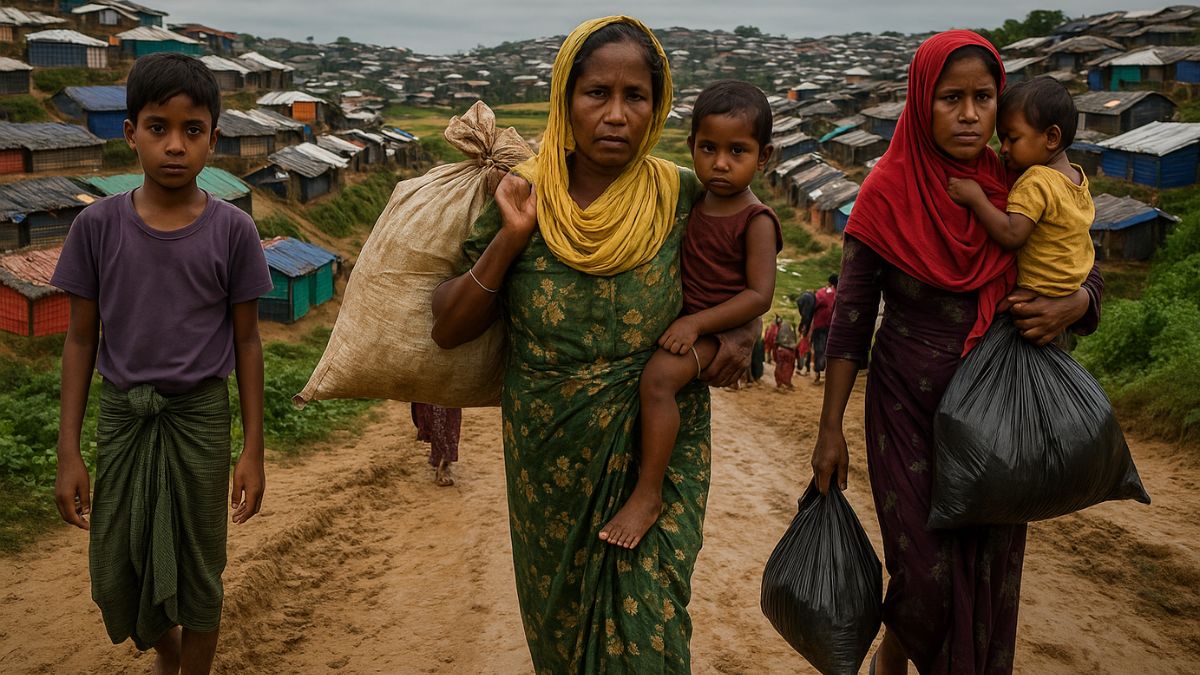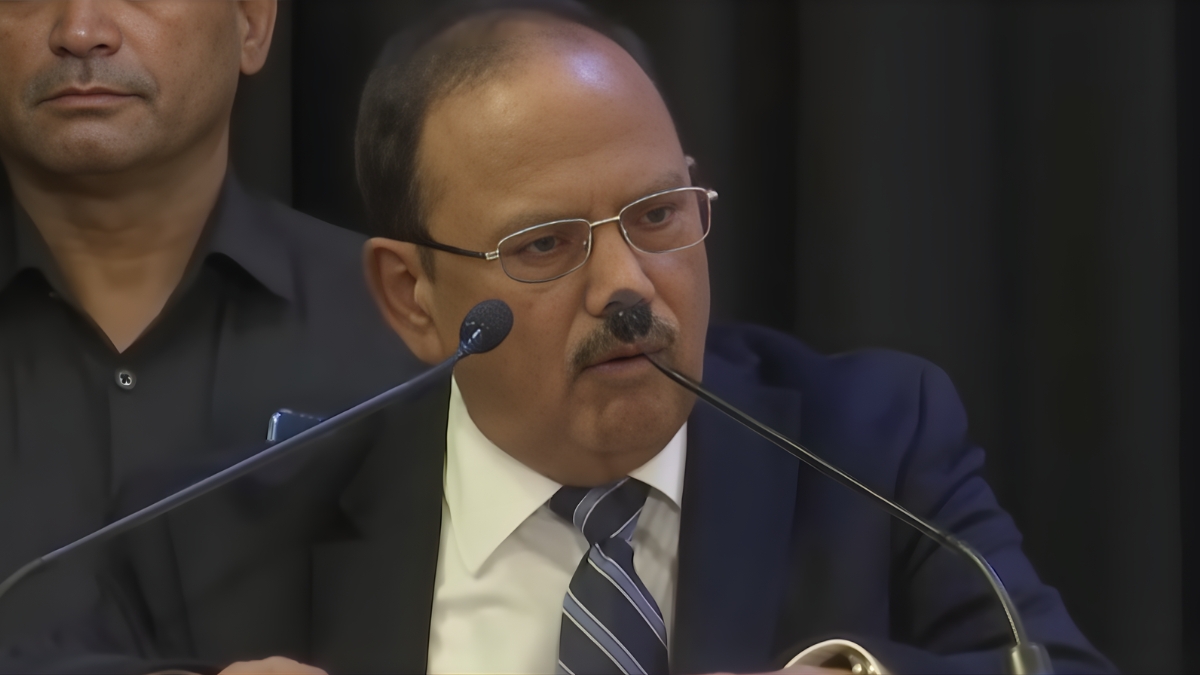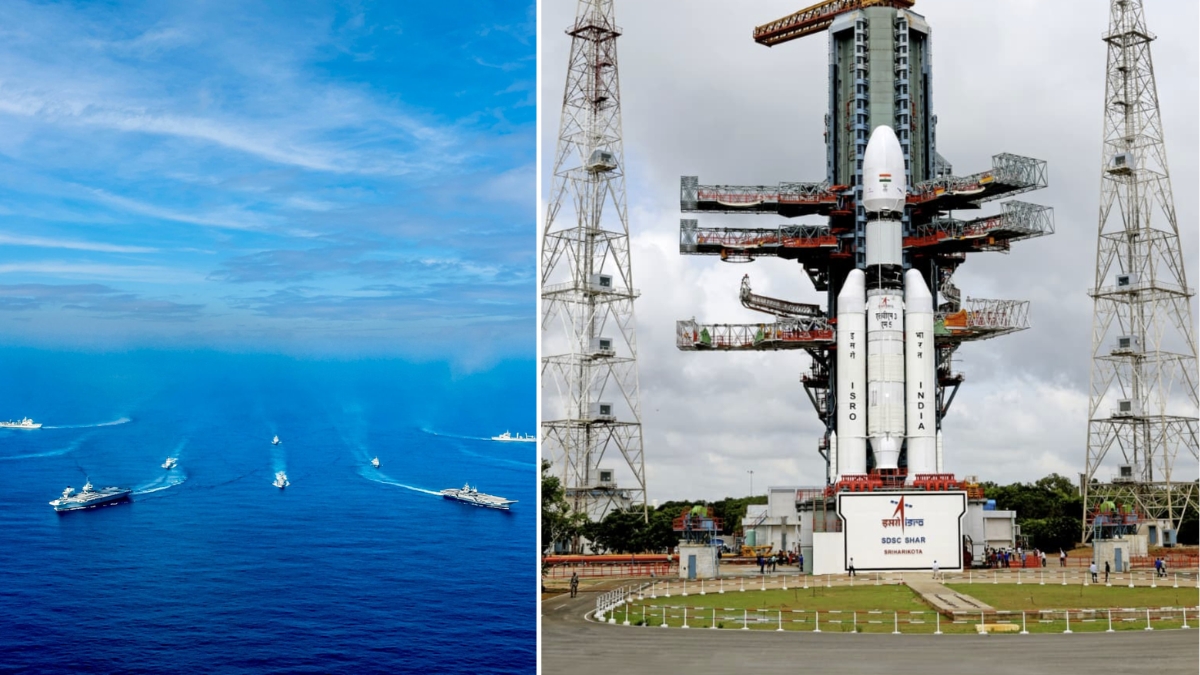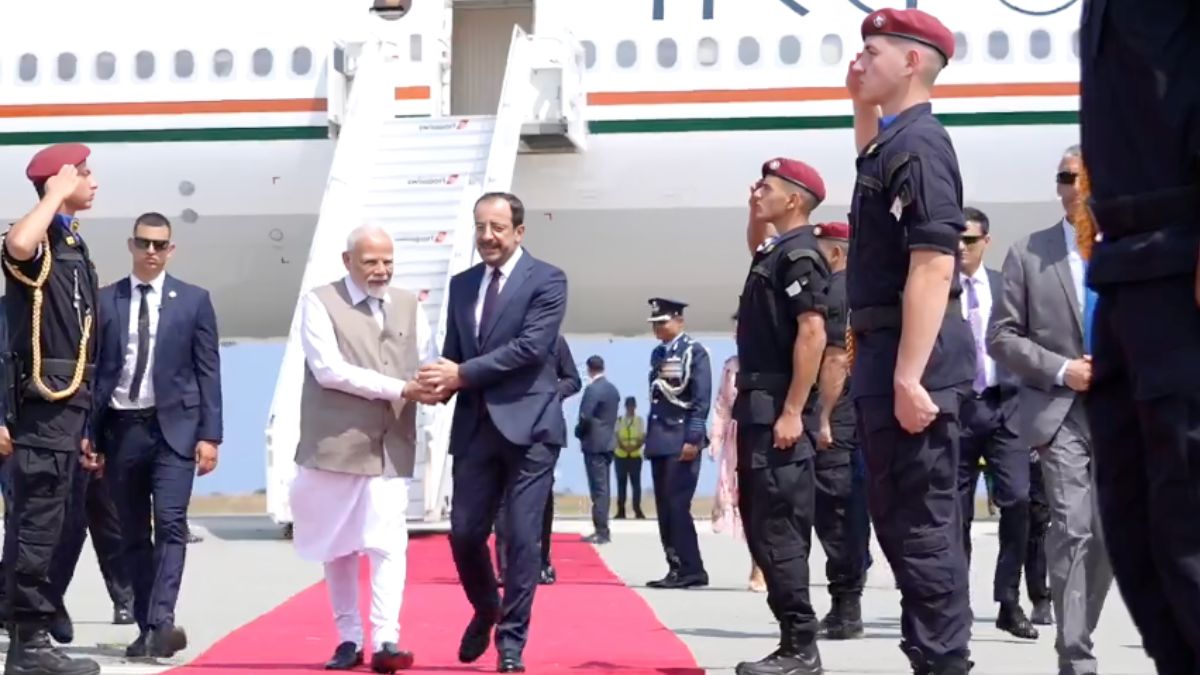Rohingya Crisis Beyond Camps: How Instability In Bangladesh’s Southeast Ripples Across Borders

Image courtesy: AI-generated picture via DALL-E
The Rohingya crisis has outgrown the boundaries of refugee camps. What began as a humanitarian emergency in Myanmar’s Rakhine state is now a regional security challenge, linking Cox’s Bazar, Bhasan Char, and India’s Northeast through a chain of instability. Dwindling funds, rising crime, and renewed conflict across the border have created a feedback loop — one where humanitarian strain deepens security risks and vice versa.
How fragile are conditions in the camps?
Bangladesh hosts more than a million Rohingya who fled persecution in Myanmar. Most live in the sprawling camps of Cox’s Bazar, while tens of thousands have been relocated to the low-lying island of Bhasan Char. The 2025–2026 Joint Response Plan, launched by Dhaka, the UN, and 113 partners, pegs the funding need at $934.5 million to assist 1.48 million people — refugees and nearby host communities alike.
But money is drying up. The World Food Programme warned in March that rations could be slashed to six dollars per person per month without new pledges. Amnesty International has reported worsening malnutrition among children. Aid shortfalls have translated into mounting insecurity: theft, smuggling, and organised crime have risen sharply within and around the camps.
Bhasan Char, designed to decongest the mainland sites, now houses tens of thousands. UN data shows it could eventually accommodate 100,000 people, but sustaining it requires reliable funding, secure transport links, and tight oversight. Without these, refugees turn to smugglers to reach the mainland or beyond.
What does renewed fighting in Myanmar mean for Bangladesh and India?
The crisis is being reshaped by the war next door. Fighting in Myanmar’s Rakhine state between the Arakan Army and junta-aligned forces, including some Rohingya armed groups, threatens to trigger new refugee flows. Analysts warn that even a small insurgency would devastate local communities and derail fragile repatriation plans.
India is already feeling the spillover. In 2025 alone, border police in Tripura and Assam intercepted groups of Rohingya attempting to cross from Bangladesh. The numbers are small compared to those in the camps but point to a steady trickle driven by hunger and fear.
To contain the flow, India’s Border Security Force has intensified patrols under “Operation Alert,” focusing on smuggling and trafficking routes in Meghalaya and Tripura. Human trafficking networks, meanwhile, exploit desperation — promising jobs or transit to big cities. Arrests this year in Tripura linked to trafficking of Rohingya and Bangladeshi nationals exposed how informal brokers and forged documents sustain these routes.
Is there any hope of return?
Repatriation to Myanmar remains the only sustainable solution, but progress is limited. During the BIMSTEC summit in April, Bangladesh said Myanmar had verified 180,000 refugees as “eligible for return,” but refugee leaders remain unconvinced, demanding guarantees of safety, citizenship, and rights.
Dhaka has since pressed the issue at the UN, urging a global roadmap for repatriation and accountability. Both the EU and UNHCR have reiterated that returns must be voluntary and safe. Yet, with Rakhine engulfed in conflict and donor fatigue setting in, those principles look increasingly aspirational.
India’s position — supporting “safe, voluntary, and sustainable” return while tightening internal enforcement — reflects its dual challenge: securing a porous frontier and managing regional diplomacy.
The equation is clear. When aid dries up, smugglers thrive; when fighting reignites, refugees flee; when borders harden, desperation rises. The Rohingya crisis has become a mirror of regional fault lines — a humanitarian story now written in the language of security.







